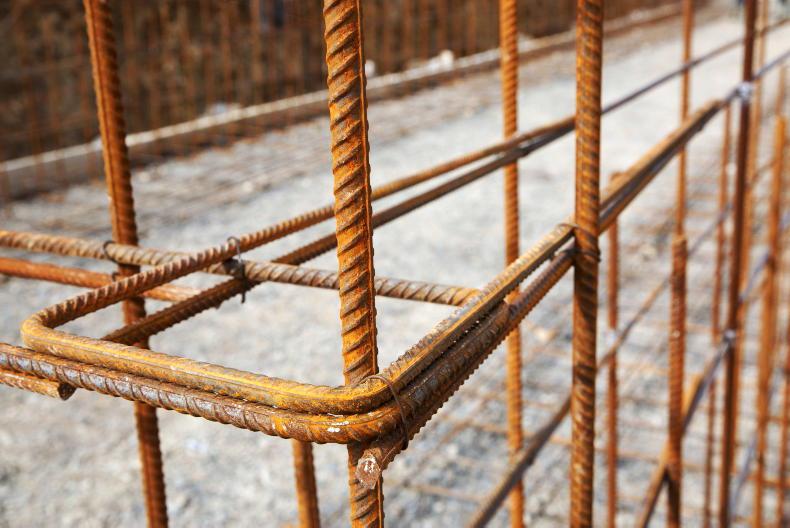Minister for Agriculture Charlie McConalogue has acknowledged that farmers’ willingness to invest to boost their slurry storage capacity has been “undoubtedly shaken” by this year’s reduction in derogation stocking rate limits across most of the country.
To keep the 220kg nitrogen/ha stocking rate allowance past 2025, every farmer must “look at their own situation” to ensure they have enough tank space to take them through the closed period, Minister McConalogue told the Irish Farmers Journal.
The Minister stated that “every sector has got to play its part” on water quality, with Government to “move heaven and earth” in the next round of derogation negotiations which will determine stocking rate limits beyond 2025.
“Confidence has undoubtedly been shaken by the fact we have seen a reduction to our nitrates derogation, but it is only by everyone doing the right things that we can make sure we are improving water quality in a way that means we can keep that derogation,” he said.
“I can accept the fact that it has led to farmers’ confidence being shaken, but I am confident…that we will keep the derogation, there is every reason why we should have it and it is fundamental to our farming model.
Clear message
“I have given the very clear message to farmers and stakeholders that the Government will move heaven and earth to hold that 220kg N/ha.
“But it does require all of us working together and it does require farmers making sure that they have sufficient quantities of storage to get through the closed period and to be able to make sure they use nutrients at the time when they are needed, not at the time that their storage is at capacity.”
Investment fears
The Minister’s comments follow a warning issued by Teagasc’s director Frank O’Mara that the “fear of additional cuts in maximum stocking rate limits” represents a “significant obstacle” to farm water quality investments.

Farmers are reluctant to increase tank capacity amid derogation uncertainty, Teagasc warned. / Donal O'Leary
An ongoing Teagasc review of the amount of slurry produced on farms is showing that the current slurry storage capacity required by farmers could be too low, O’Mara commented when speaking before the Oireachtas Joint Committee on Agriculture on Wednesday.
The committee was told that increasing slurry storage is among the actions farmers can take to reduce nutrient losses, as slurry spreading could be better timed for periods of good weather and lower nutrient losses.
“I think the one single thing that would make a difference is more slurry storage on our farms that would allow farmers more flexibility with when and how and where they use slurry, but having that storage and making use of that to the best effect,” the Teagasc director said.
The authority’s head of research Pat Dillon added that the ongoing farm slurry survey is showing that “there are problems and it is both a capacity problem and a rainfall problem”.
Neither Teagasc official would be pushed on what levels of increased capacity could be needed on foot of the review, but O’Mara did state that the survey’s results indicate that this will be “significant” and “not 1% or 2%”.
Read more
Losing derogation would risk Irish dairy's competitive edge - Teagasc
Minister for Agriculture Charlie McConalogue has acknowledged that farmers’ willingness to invest to boost their slurry storage capacity has been “undoubtedly shaken” by this year’s reduction in derogation stocking rate limits across most of the country.
To keep the 220kg nitrogen/ha stocking rate allowance past 2025, every farmer must “look at their own situation” to ensure they have enough tank space to take them through the closed period, Minister McConalogue told the Irish Farmers Journal.
The Minister stated that “every sector has got to play its part” on water quality, with Government to “move heaven and earth” in the next round of derogation negotiations which will determine stocking rate limits beyond 2025.
“Confidence has undoubtedly been shaken by the fact we have seen a reduction to our nitrates derogation, but it is only by everyone doing the right things that we can make sure we are improving water quality in a way that means we can keep that derogation,” he said.
“I can accept the fact that it has led to farmers’ confidence being shaken, but I am confident…that we will keep the derogation, there is every reason why we should have it and it is fundamental to our farming model.
Clear message
“I have given the very clear message to farmers and stakeholders that the Government will move heaven and earth to hold that 220kg N/ha.
“But it does require all of us working together and it does require farmers making sure that they have sufficient quantities of storage to get through the closed period and to be able to make sure they use nutrients at the time when they are needed, not at the time that their storage is at capacity.”
Investment fears
The Minister’s comments follow a warning issued by Teagasc’s director Frank O’Mara that the “fear of additional cuts in maximum stocking rate limits” represents a “significant obstacle” to farm water quality investments.

Farmers are reluctant to increase tank capacity amid derogation uncertainty, Teagasc warned. / Donal O'Leary
An ongoing Teagasc review of the amount of slurry produced on farms is showing that the current slurry storage capacity required by farmers could be too low, O’Mara commented when speaking before the Oireachtas Joint Committee on Agriculture on Wednesday.
The committee was told that increasing slurry storage is among the actions farmers can take to reduce nutrient losses, as slurry spreading could be better timed for periods of good weather and lower nutrient losses.
“I think the one single thing that would make a difference is more slurry storage on our farms that would allow farmers more flexibility with when and how and where they use slurry, but having that storage and making use of that to the best effect,” the Teagasc director said.
The authority’s head of research Pat Dillon added that the ongoing farm slurry survey is showing that “there are problems and it is both a capacity problem and a rainfall problem”.
Neither Teagasc official would be pushed on what levels of increased capacity could be needed on foot of the review, but O’Mara did state that the survey’s results indicate that this will be “significant” and “not 1% or 2%”.
Read more
Losing derogation would risk Irish dairy's competitive edge - Teagasc







 This is a subscriber-only article
This is a subscriber-only article










SHARING OPTIONS: